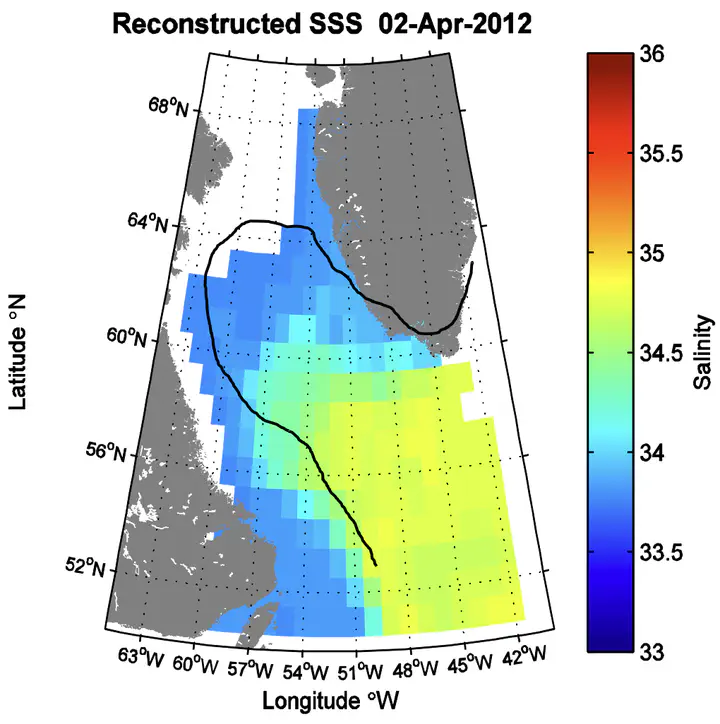 Reconstructed bin averaged 100km resolution SSS, from Aquarius, Argo and SST.
Reconstructed bin averaged 100km resolution SSS, from Aquarius, Argo and SST.Abstract
Salinity in the Labrador Sea is an important factor in convection and deep water formation as it dominates physical water column structure. As a major location for deep water formation the Labrador Sea is sensitive to additions of freshwater, as it acts to stabilise seawater in the buoyancy budget (Solomon et al, 2007). Based on surface layers of the Labrador Sea tending to be both fresh and cold, the motivation for this study was to understand salinity influences by generating a Sea Surface Salinity (SSS) lookup table between 50ºN, 65ºW – 65ºN, 45ºW to estimate SSS from Sea Surface Temperature (SST). The data used to construct temperature - salinity relations for the lookup table was Argo float data between 50ºN, 65ºW – 65ºN, 45ºW from January 2002 - December 2012. UK Met Office OSTIA SST data from August 2011 - February 2015 was used to reconstruct SSS and National Aeronautics and Space Administration (NASA) derived Aquarius SSS data from August 2011 - February 2015 was used to compare reconstructed SSS against, both between 50ºN, 65ºW – 65ºN, 45ºW. Results show a tight Argo temperature - salinity relationship exits in winter months, allowing SSS to be reconstructed reasonably accurately. In contrast summer temperature - salinity relations ‘breakdown’ , proving problematic to reconstructing salinity from temperature. Reconstructed SSS correlates reasonably with Aquarius in the East and West Basin but not in the central basin, although further analysis and research is undoubtedly required. Salinity is relatively under-sampled in sub-polar oceans and low in resolution, making the ability of estimate salinity from existing data a simple and cost effective solution. The possibilities of such a look up table are an exciting prospect and potential applications broad, ranging from vertical reconstruction of salinity, density and velocity, to a better understanding of freshening influences on the AMOC and identification of deep convection.